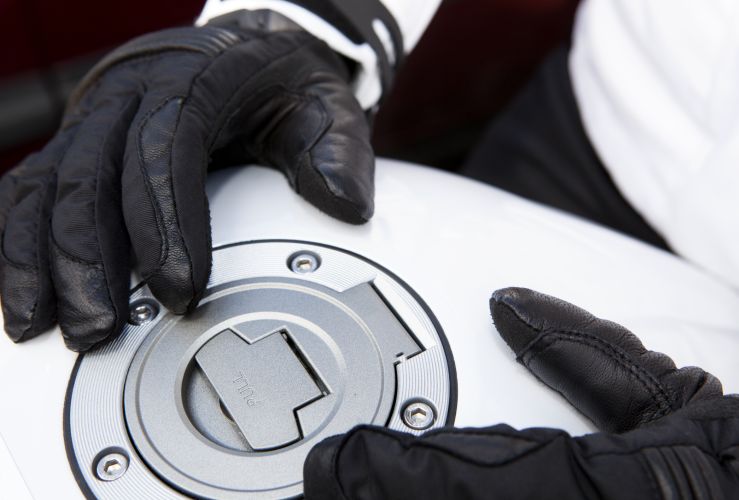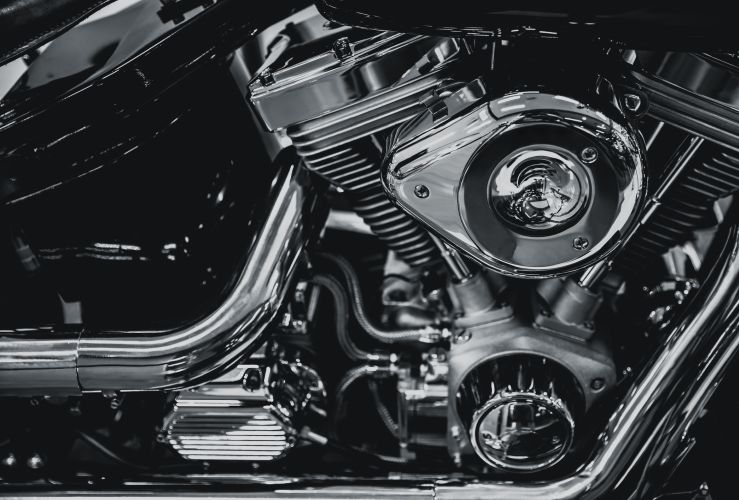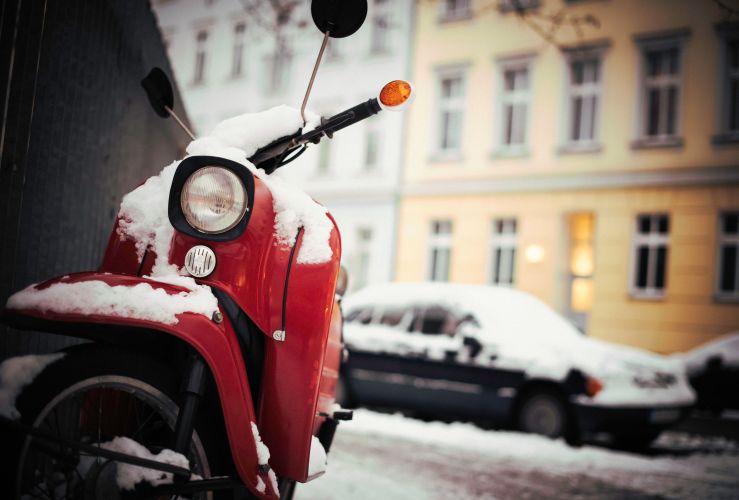British winters can be long, cold, icy and damp, making motorcycling unappealing to many.
If you decide to store your machine for the winter, it’s important to carry out some winter checks to prepare it for the low temperatures, and more importantly, any moisture that may get inside and cause permanent damage.
Read the following tips to keep your bike protected and secure over winter.
Note: You should always check your vehicle handbook for any fault remedy before carrying out any work on your vehicle. If you are unsure of what is required to fix any problems, please consult a professional.
Take your bike for a ride before storage

During colder months, we ride our bikes less, and water and contaminants build up in the oil.
Taking your bike for a ride before storing it will drive off some of the moisture. Additionally, if you have a chain-drive motorcycle, the chain will be heated up and will be much easier to lubricate - something that should be done before you store your motorcycle.
Lubing your chain will help protect it from wintertime salt and rust.
Fill the motorcycle fuel tank


An easier alternative is to do the opposite: fill up your fuel tank.
By doing this you are driving off airspace, and because you have fuel vapour in there, water has little or no chance to form.
Treat the fuel
It's also a good idea to treat the fuel before you let it sit for a long period.
A good fuel treatment product will help prevent the separation of ethanol in the tank, which can result in 'goop' - not good for your engine.
Top up the fuel with treatment fluid to the point where there is no space left.
Replacing fluids
If you're storing your bike for a prolonged period, it's a good idea to remove certain fluids: engine oil; primary fluid; transmission fluid.
When left sitting for a long time, these can take on grime and dirt, and can damage aluminium components.
If you have a liquid-cooled motorcycle, remove the coolant before storage.
Coolant can turn acidic over time, which can damage internal aluminium components.
Fogging the cylinders
If you plan on storing your motorcycle through a long, harsh winter - say, six to eight months - you may consider fogging your cylinders. This involves lubricating the inside of the motor.
This can be done by removing a spark plug and adding a heavy aerosol lubricant called fogging oil.
Alternatively, simply add a little motor oil, which will do a similar job - but without the aerosol action.
Wash and wax

Choose a motorcycle-specific wash to clean the surface components of your bike. Grime, dirt and bird droppings can all accumulate over time.
After cleaning, wax the surfaces of your bike to protect the chrome and paintwork.
Additionally, if you take your bike out during the winter, the wax will also help to repel any salt water that comes into contact with your bike.
Motorcycle winter storage
It's best to store your motorcycle in as warm and sheltered a location as possible, but sheds and garages are common.
Wherever you choose to store your motorbike for winter, you should ensure that you don’t store your motorbike in direct sunlight as this can damage your bikes paintwork and vinyl/leather. Therefore, you should ensure that you store your bike away from windows.
It's also best to keep your motorbike covered. However, you should ensure that you use a suitable cover.
Moist air can become trapped under a motorcycle cover, which then starts to condense when the air temperature rises, but the motorbike’s metal parts are still cool.
This condensation can lead to mould, rust and corrosion to your motorbike
Choosing a cover for your motorbike
When selecting a cover for the winter storage of your motorbike you should look for one that:
- Has breathable/ventilation features to prevent moisture trapping
- Is made of a light but durable, water-resistant material.
- Fits your motorcycle snugly without being too loose or too tight.
Before applying the motorbike cover, make sure your bike is fully dry and cool to help reduce the build-up of condensation.
You should also ensure that your bike and the motorbike cover are free of debris.
Any debris that gets caught on the cover may cause scratches to your motorbike’s paintwork.
A more costly option opposed to a regular motorbike cover, is to use an inflatable bike chamber.
Inflatable bike chambers like this one from Airflow, seals your bike in and creates a perfectly dry environment to prevent rust and mildew and filters out airborne dust.
Connect a battery trickle charger
Many modern motorcycles are managed by computer systems which, even when the bike is off and stored, can drain the battery over time. At worst, a newer bike may have a drained battery within two or three weeks.
Batteries on older motorcycles, which do not have any kind of computer management system, will take two or three months to drain. But to protect the battery over its winter storage period, it's best to connect a trickle charger.
Modern trickle chargers can detect the condition of the battery and charge it appropriately.
Stuff rags in the tailpipe
This prevents moisture entering the exhaust.
Storing your motorcycle outside?

If you don’t have a shed, garage or even side alley to keep your bike in, you may need to keep it out on the street.
If so, you may wish to remove any vinyl seat cover and take it inside.
You might also remove the battery and hook it up to a trickle charger in your home.
In addition, you may decide not to cover your bike if it is outside, since covers can act as a sponge, keeping the surfaces of your bike in contact with moisture. However, one benefit of covering up your machine is that it will be difficult to identify by thieves - important if you have a particularly desirable or in-vogue bike.
Protect your vinyl seat
If your motorcycle has a vinyl seat, use some vinyl conditioner to protect it from low winter temperatures.
Placing your motorcycle on cardboard
While not everyone sees the benefit of placing cardboard or carpet under motorcycle wheels during storage, others say it acts as a moisture barrier between the machine and the concrete.
Top up your tyres
By slightly over-inflating your tyres before storage; they should keep their shape better.
Should you start up your bike periodically?
If you're storing your bike for a couple of months, it may be better not to start it up periodically.
For longer periods of storage, you may decide to fire up the engine every month or so. Be sure to unblock the exhausts first.
It is a good idea to place a 'holes blocked' post-it on the ignition, reminding you to take out any rags before starting the engine again.
Chains and locks
And it goes without saying, secure your bike with a high quality lock, particularly if you’re storing the machine outside your home.
If you do choose the al fresco option, keep your machine in a well-lit area with plenty of foot traffic. Keep locks off the ground so as not to give thieves additional leverage. Ensure ignition and steering locks are in place.
Connect a cable to your motorcycle and link it to something on the ground. If you can, use two different types of lock, to further frustrate a would-be thief.




